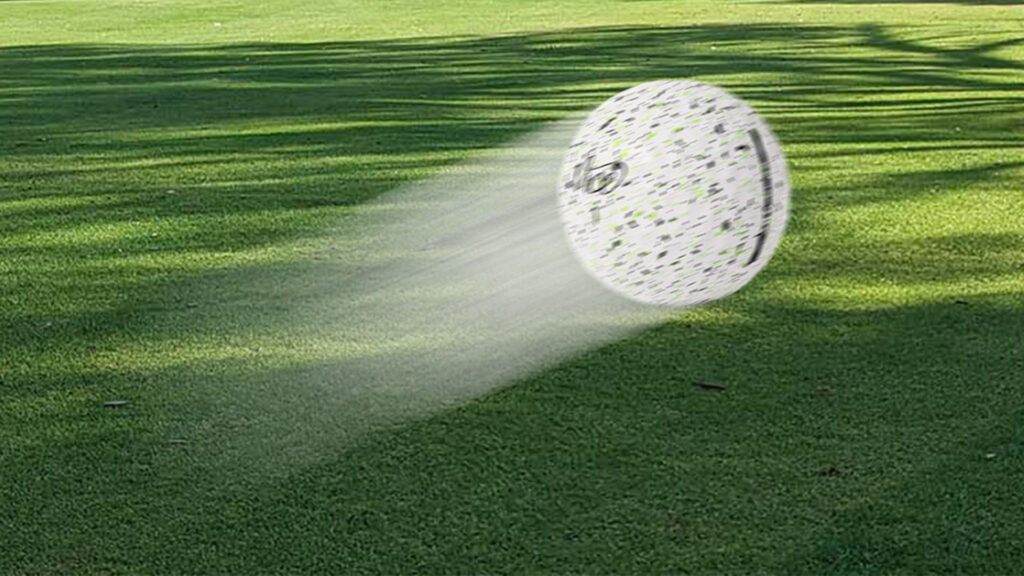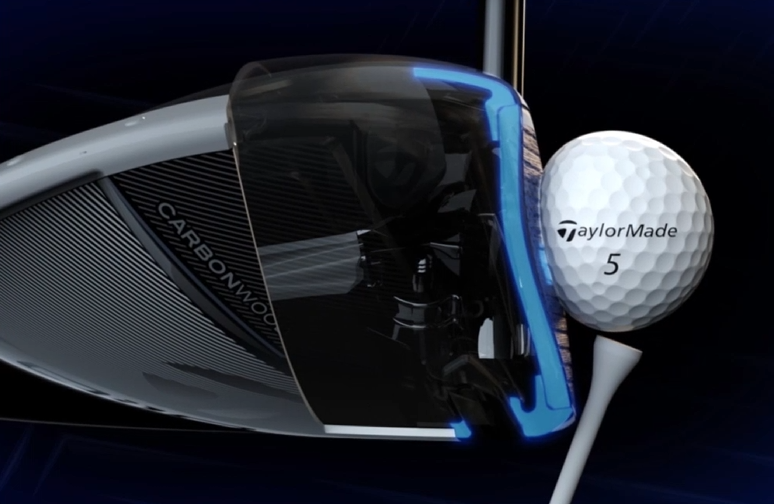Golf Ball Speed Explained: Tips and Tricks for Maximum Distance

Want to hit the ball farther? It all starts with golf ball speed. In this article, we break down what ball speed is, why it matters, and how you can improve yours. Get ready to unlock the secrets of golf ball speed and how to hit farther.
Golf Ball Speed: Key Takeaways
- Golf ball speed, defined as the velocity of the golf ball immediately after impact with the clubface, is crucial for determining distance, with higher speeds resulting in greater distances.
- Factors influencing golf ball speed include club head speed, impact location on the clubface, and launch angle and spin rate, all of which golfers can optimize through targeted adjustments and using advanced tracking tools like launch monitors.
- Improving golf ball speeds involves refining swing technique, focusing on strength and conditioning exercises, and using custom-fitted equipment to maximize efficiency and performance.
Understanding Golf Ball Speed
Golf ball speeds play a significant role in shaping your game. But what exactly is golf ball speed, and why is it so important? At its core, ball speed is the velocity of the golf ball immediately after it leaves the clubface following impact.
Definition of Golf Ball Speed
Golf ball speed, in simple terms, refers to the speed at which the ball travels right after the clubface strikes it. This measurement is more vital than swing speeds in determining how far you hit the ball because it is the real speed of how fast the golf ball is travelling. You can anticipate approximately an additional two yards of carry distance for every mile per hour increase in ball speed.
This means that achieving higher ball speeds can substantially improve your overall performance on the course, while having less ball speed might hinder your game.
How Golf Ball Speed is Measured
Precise measurement of golf ball speed requires a launch monitor. Camera-based launch monitors, such as the PRGR, Rapsodo MLM, and Swing Caddie SC300, are known for their accuracy and are commonly used by both amateurs and professionals to track ball speed.
Radar-based systems are another popular choice. High-end launch monitors can capture ball speed in a split second, providing invaluable data for analyzing and improving your swing. By understanding these measurements, golfers can make targeted adjustments to their technique and equipment to optimize performance.
Many professional lessons include use of a launch monitor which will provide you with invaluable feedback on your launch conditions, including ball speed. Golf simulators use launch monitors to calculate your distance and trajectory, portable launch monitors can be used at the driving range or even on the golf course.
Factors Influencing Golf Ball Speed
Ball speed can be affected by various elements such as club head speed, the location of impact, launch angle and golf ball construction. Understanding these elements can help you optimize your swing and achieve higher ball speeds.
Club Head Speed
The speed of the clubhead at impact is the primary determinant of ball speed. The faster the club head is moving when it strikes the ball, the higher the resulting ball speed. Professional golfers, such as those on the PGA Tour, often have club head speeds exceeding 115 mph, which translates to high ball speeds of 165+ mph and greater distances.

However, even recreational players can see substantial improvements by focusing on increasing their club head speed while maintaining control and accuracy.
It is not just about the velocity at which your club head is travelling when striking the golf ball. There is also something called ‘smash factor’ which is a direct ratio between the speed of the club head and the ball speed that is generated. Smash factor essentially measures how efficiently you strike the ball.
Impact Location
The spot on the clubface where the ball hits can noticeably influence ball speed. Hitting the ball on the toe or heel of the clubhead results in inefficient power transfer and reduced ball speed. Conversely, striking the ball more centrally on the clubface, particularly on the sweet spot, can lead to increased ball speed and more consistent shots.
Launch Angle and Spin Rate
The optimization of ball speed and distance also depends significantly on launch angle and spin rate. The optimum launch angle for maximum distance usually falls within the range of 10 to 15 degrees (for a driver). Achieving this launch angle can help the golf ball travel the farthest distance. Factors such as the club loft and the performance characteristics of the golf ball heavily influence launch angle.
Achieving the right balance between these factors can lead to significant improvements in carry distance and overall ball speed.
Golf Ball Construction
Ball speeds are optimized when the energy transfer between the club and golf ball are at maximum efficiency. Golf ball construction plays a large role in how the ball compresses and launches off the club face. The core of the golf ball is the engine room, this part of the ball deforms and propels the ball off the club like a spring. Over or under compressing a golf ball will negatively affect your ball speed.
Techniques to Increase Your Golf Ball Speed
Enhancement of your golf ball speed entails the refinement of your swing technique, emphasis on strength and conditioning, and utilization of suitable equipment.
Improving Swing Technique
Improvement in your grip, stance, backswing and follow-through can markedly boost your swing mechanics and ball speed. Achieving a higher smash factor through optimal ball striking is crucial. Moreover, flexibility and timing in your swing contribute to higher ball speeds.
Strength and Conditioning
Targeted exercises that focus on golf-specific muscles are essential for improving swing speed. Strengthening the core muscles, including the lower back, pelvic muscles, and glutes, is crucial for generating power during the swing.
Additionally, drills that mimic dynamic rotation can improve your driver swing speed and overall swing speeds. One of the biggest restrictors of swing speed is range of motion, very few golfers utilize a full range of motion. Regular and targeting stretching will allow for a full back swing and follow through.
Using the Right Equipment
The use of correctly fitted clubs can markedly influence your ball speed. Custom-fitted equipment tailored to your swing characteristics can enhance performance more effectively than expensive, off-the-shelf gear. Proper fitting considers various factors like shaft flex, club length, and lie angle to optimize your ball speed. Matching a ball with the optimum compression and construction for your swing will help to maximize ball speed too.
Measuring and Tracking Your Progress
To enhance your ball speeds, it’s important to:
- Measure and keep track of your progress
- Use launch monitors to gather data
- Set realistic goals for improvement
- Analyze the data to make informed adjustments
Using Launch Monitors
Launch monitors provide an easy and accurate way to measure ball speed and other key metrics. Popular models include:
- PRGR
- Rapsodo MLM
- Swing Caddie SC300
- Bushnell Launch Pro
- FlightScope Mevo+
These launch monitors offer precise readings and provide real-time data both indoors and outdoors.
Using launch monitors helps golfers track improvements over time and make necessary adjustments to their techniques.
Common Myths About Golf Ball Speed
Several misconceptions about ball speed can misguide golfers. Let’s debunk some of these common misconceptions.
Myth: Only Pros Can Achieve High Ball Speeds
It’s often misperceived that only professionals have the ability to achieve high ball speeds. In reality, amateurs can also attain impressive ball speeds with the right techniques, equipment and approaches.
By focusing on improving swing mechanics, strength, and using properly fitted equipment, amateurs can enhance their ball speed.
Myth: Strength Alone Determines Ball Speed
Not just raw physical strength, but efficiency in technique and quality of strike can result in marked improvements in ball speed. Efficient energy transfer from the club to the ball, often measured by the smash factor, is more significant for ball speed than the golfer’s strength. While strength does play a role, mastering both technique and efficiency is key to achieving maximum ball speed.
Summary
Mastering golf ball speed is essential for maximizing distance and improving overall performance. By understanding the factors that influence ball speed and implementing effective techniques you can achieve significant ball speed gains.
Remember to focus on proper swing mechanics, strength and conditioning, and using the right equipment. Achieving maximum ball speed is not just about swing faster or harder. It is about improving the efficiency of your ball striking.
Measure your progress with launch monitors, set realistic goals, and make data-driven adjustments. With dedication and the right approach, you can achieve impressive ball speeds and lower your scores on the course.
Frequently Asked Questions
What is golf ball speed?
Golf ball speed is the velocity of the ball right after it leaves the clubface upon impact. Ball speed plays a crucial role in determining the distance the ball will travel.
How can I measure my golf ball speed?
You can measure your golf ball speed using launch monitors or radar systems which accurately capture the ball’s speed at the moment of impact.
Why is ball speed important in golf?
Ball speed is important in golf because it directly affects the distance the ball travels, ultimately impacting your overall performance and scores. Achieving higher ball speeds can significantly improve your game. It is also an indicator of how well you are striking the ball.
Can amateur golfers achieve high ball speeds?
Yes, with the right techniques, strength and conditioning, and properly fitted equipment, amateur golfers can achieve impressive ball speeds. Improving swing mechanics and using training aids can also help enhance ball speed.
Does expensive equipment guarantee better ball speed?
No, expensive equipment does not guarantee better ball speed. Properly fitted clubs and golf balls tailored to your swing characteristics are more important for optimizing ball speeds than simply using expensive new equipment. Keep this in mind when considering your options.

